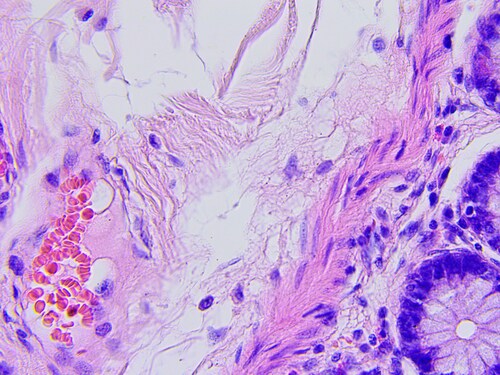 Colorectal cancer (CRC) is the third most common cancer and the fourth leading cause of cancer death worldwide. At present, microsatellite instability (MSI) is the only reproducible marker with significant prognostic value in CRC. Future research aims to identify markers involved in tumor progression, better elucidate the carcinogenesis process, and discover new prognostic markers and novel therapeutic targets. However, this relies on high-quality biospecimens, which favors fresh-frozen tissue because it has high-yield and high-quality nucleic acids compared to formalin-fixed paraffin-embedded (FFPE) tissue. In general, RNA integrity in gastrointestinal tract tissues, particularly colonic tissue, is lower compared to tissue from other organs. Furthermore, parameters such as the type of surgery used to extract tissue, cold ischemia duration, and storage temperature and duration have unknown impacts on RNA quality. Therefore, Galissier et al. (2016) assessed whether clinical, surgical, histological and molecular parameters influence RNA quality of frozen colon tumor samples and healthy frozen colon samples.1
Colorectal cancer (CRC) is the third most common cancer and the fourth leading cause of cancer death worldwide. At present, microsatellite instability (MSI) is the only reproducible marker with significant prognostic value in CRC. Future research aims to identify markers involved in tumor progression, better elucidate the carcinogenesis process, and discover new prognostic markers and novel therapeutic targets. However, this relies on high-quality biospecimens, which favors fresh-frozen tissue because it has high-yield and high-quality nucleic acids compared to formalin-fixed paraffin-embedded (FFPE) tissue. In general, RNA integrity in gastrointestinal tract tissues, particularly colonic tissue, is lower compared to tissue from other organs. Furthermore, parameters such as the type of surgery used to extract tissue, cold ischemia duration, and storage temperature and duration have unknown impacts on RNA quality. Therefore, Galissier et al. (2016) assessed whether clinical, surgical, histological and molecular parameters influence RNA quality of frozen colon tumor samples and healthy frozen colon samples.1
The investigators used samples (untreated with chemotherapy or radiotherapy) collected by the pathology department of Reims University Hospital in France between October 2006 and December 2012. They then stored them in the Tumorothèque de Champagne Ardenne biobank. They used 241 colonic adenocarcinoma tissue samples and 115 matched normal colonic mucosa samples in their study. The biobank transported collected samples at room temperature and then divided each in half. They formalin-fixed one half for histological work, and snap-froze the other at −80°C for biobanking. They used the same storage procedures for normal and tumor samples.
Galissier et al. had two pathologists, blinded to RNA Quality Index (RQI) results, perform histological evaluations of FFPE tissue samples. Using immunostaining, the investigators also looked for correlations between immunohistochemical expression of apoptosis or ischemia markers and RNA quality. They also extracted and measured the concentration of RNA in samples.
In 48.7% (n = 56) of normal samples, the investigators found sufficient quantities of RNA (RQI ≥ 5), compared with 78% (n = 188) of the tumor samples. They did not observe any significant difference as a result of clinical parameters such as age, sex and anatomical site between samples with RQI < 5 and samples with RQI ≥ 5. In line with similar studies, the investigators found that RNA quality was higher in tumor tissues than in normal tissue regardless of the site of origin, and that storage duration did not affect RNA quality. However, they found that the tumor location significantly influenced RQI values on multivariate analysis. Also, laparoscopic colectomy and anastomotic leakage resulted in lower RNA quality from tumor samples.
In conclusion, Galissier et al. suggest that RNA quality has no relationship with pre-analytical, morphological or molecular parameters.
Reference
1. Galissier, T., et al. (2016) “Biobanking of fresh-frozen human adenocarcinomatous and normal colon tissues: Which parameters influence RNA quality?” PLOS One, 11(4) (e0154326a), doi: 10.1371/journal.pone.0154326.
Leave a Reply